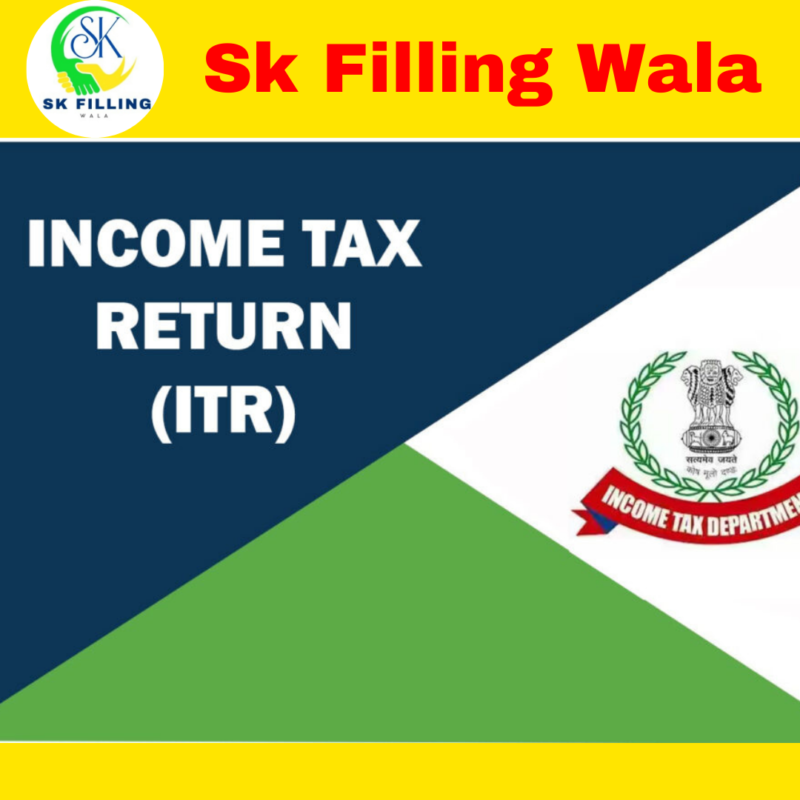ITR 1 Full Details
ITR 1 is a simple return form of one page for individuals. It can be filled out with central officials, PSU personnel, pensioners as well as other individuals.
Individuals who earn a living from a single property can file ITR 1. However, those who own multiple properties in their homes or earn those who earn income from their profession or business must file their tax returns on other forms.
What is ITR 1?
ITR 1 is a form which must be filled out by people who earn over Rs. 2,50,000. It contains various sections that document the various aspects of your income and deductions, such as TDS on salary and interest. Additionally, it contains declarations of tax-saving investments which reduces your tax deductible income. ITR 1 is a form which can be filled out both online or offline. The latter is the preferred option since it permits you to electronically verify the submission via the internet banking system, Aadhar OTP, or EVC.
The form includes an area for verification where you must provide your name as well as the name of your father. It is essential to save a duplicate to be able to refer back to it in the future. It is also necessary to supply your address as well as your PAN card number and birth date to finish the filing procedure. Other documents you will need to submit include Form 16 as well as receipts for house rent and investment premium receipts.
ITR 1 can be used by HUFs and individuals that earn income from one home such as savings or fixed deposits pensions for family members, savings or fixed deposit agricultural income. However, if you receive money from multiple house or are a foreign resident you need to file an ITR 2. In addition, those who earn professional or business income cannot make use of this form. It is better to file ITR 3 or ITR 4 according to your income category.
File ITR 1 online
To fill out ITR 1you have to access the IRS’s online filing portal, and sign in with you PAN as well as your Aadhaar ID. After you’ve logged in, the majority of details will be filled in. You must verify the information prior to going ahead. After that, you’ll be able to see the tax calculation. After you’ve verified the report, you will be able to make a tax payment in the event that you have any.
ITR Form 1 has some sections you have to fill out manually, as well as some that can be filled automatically. For instance, the ‘Personal Information section includes the PAN number, Aadhaar number, address as well as your date of birth and any other information pertinent to. The section ‘Income Sources’ will include your salary as well as deductions made under the 16 and relevant details. If you earn rental income it is necessary to provide the information under this section, too.
The section titled “Tax Paid” provides details on taxes you paid during the prior year. This includes TDS taken out of your pay, TCS collected on other sources of income (such as interest) as well as self-assessment tax. It is also necessary to report any tax you have paid in advance. that you paid.
The final section “Bank Account Details” area requires you to reveal every one of your current and savings accounts within India at any time during the year in which you file. It is required to disclose details of the IFSC code, the name of the bank, as well as the account number for each account. You may also choose one or more accounts that you wish be able to get any reimbursements.
Self-filing of ITR 1.
Filing ITR 1 on your own is an easy and straightforward procedure that is done online. It can save time and decrease errors through automatic filling in certain fields. All you need to do is fill in the information required and submit it. After submission, you are able to examine your ITR status by using the acknowledgement number generated.
Begin by going to the official Income Tax Department website and sign up. Once you’ve registered, select the filing mode and the assessment year. Click on “Start New filing” to begin submitting. It is important to note that the ITR form will be pre-filled with the information available from the Department Make sure the form is completed correctly before starting.
Under the Personal Information section, you’ll see all your information such as name, birth date and gender, which need to be confirmed. After that, go to the section ‘Income sources in which your salary details is entered following the form 16. For those who earn rental income, you are able to add the details of this in this section. In the section titled “Real Estate Income, you are able to also provide information for any other tax deductible income such as capital gains (both short and long-term) or any carried forward losses.
Keep in mind the ITR-1 is an easier tax form intended for individuals who are salaried and have easy income sources. It’s not for those who earn a living from a professional or business ventures, own multiple properties or claim relief for foreign tax owed or seek relief from double taxation under section 90/90A/91.
Filing ITR 1 with the help of professionals
It is the ITR 1 form is designed to facilitate tax filing as simple for those who have a simple income structure. It is available to people whose income total is not more than Rs 50 lakh, which includes pensions or salary. Individuals are also able to combine their earnings with those of their spouse, or younger children as long as they do not violate the rules. Additional sources of revenue such as interest earned from savings account, fixed deposit or pensions for the family are also not included. However, winnings from races or lotteries don’t meet the criteria.
The form requires basic personal details like name, PAN number email address, address, and return filing type. It also contains a list of tax payments and the list of deductions for taxes. The taxpayer has to verify the data entered and confirm the accuracy of each section that are included in ITR 1.
People with more complicated financial portfolios should choose different forms, such as ITR 2 or ITR 3. Non-resident Indians or those with foreign assets, residents who claim relief from section 90/90A/91 as well as those with a significant agriculture income are not eligible to use ITR 1. However, they must submit other returns as well. This will allow the proper use of exemptions and deductions. It also helps avoid any legal consequences arising from delays or not disclosing returns. Furthermore, taxpayers should plan appointments well in advance to create the necessary documents and submit the returns.

